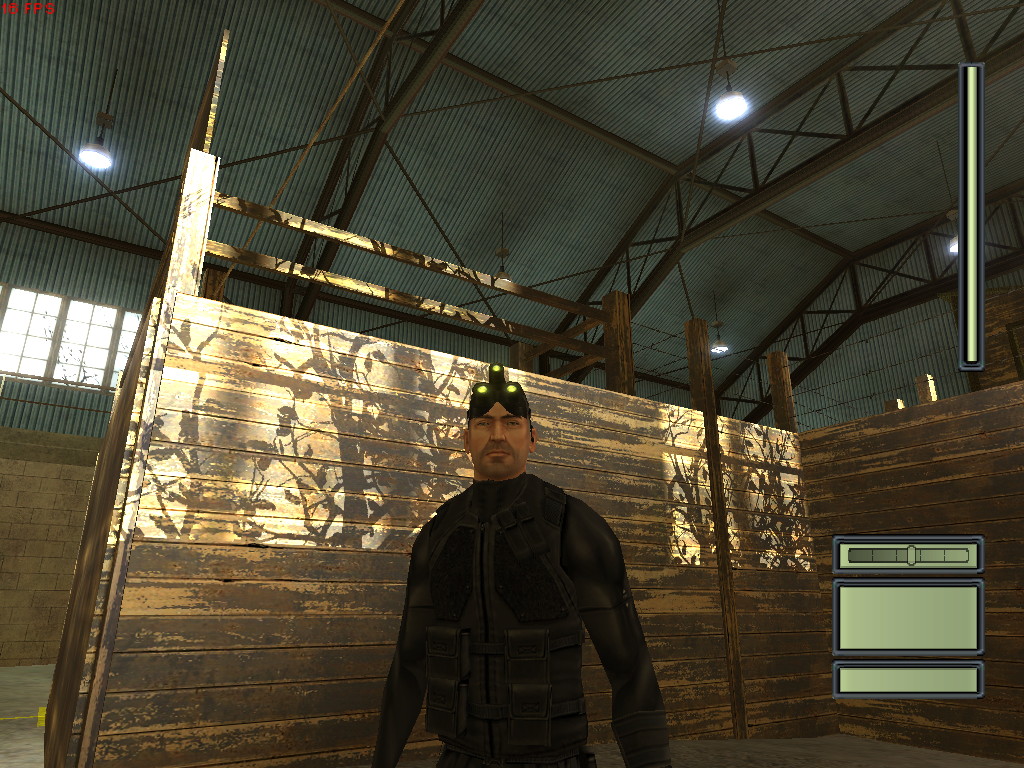NamelessPlayer wrote:
Like the co-op missions in San Andreas? Other than that, I can't think of anything that PC versions of GTA III/VC/SA were missing out, other than the enhanced Xbox assets for the first two.
Motion blur in GTA Vice City (and if I remember right 3; it's been YEARS since I've played 3 though) are unavailable on the PC versions, but exist on the PS2 version. It also exists on the PS2 version of Vice City Stories, but I haven't seen that game on any other platforms so I don't know if that's a PS2 unique feature.
It doesn't really make or break gameplay, but it was another example of a graphics feature that exists for console hardware but wasn't enabled or supported fully for PC.
In Splinter Cell's case, this just smacks of lazy porting to me, especially considering how Chaos Theory looked so much better on PC than Xbox; on the flip side, that was years later, with newer generations of graphics cards available. Pretty sure the GeForce 6800 had just debuted around that time and SM 2.0 was pretty established then.
In any case, designing for very hardware-specific features like this tends to break compatibility with later hardware, and it reminds me a lot of ATI's TRUFORM, early Ageia PhysX implementations that don't run on NVIDIA cards (GRAW 1 comes to mind), and maybe even the old 3dfx T-Buffer on the VSA-100 cards. It bugs the hell out of me, just like not being able to enable full A3D 2.0/3.0 on certain old games without an Aureal Vortex2 card.
P.S.: Do old PC sound cards and that Koss ESP/950 setup of yours make a good mix, especially with proper headphone A3D, or is it just too revealing of the crappy DAC stages of the cards available at the time?
GeForce 6800 and Chaos Theory sound about right age-wise; Wikipedia says Chaos Theory was early 2005, which puts it kind of in-between GF6 and 7. SM2.0 was certainly mainstream by then; easily onto 2nd/3rd generation DX9 hardware. I'd agree with "lazy porting" - my point about GTA was yet another example more than anything else. Personally my "answer" to porting concerns is to try and get the game on whatever is the "best" platform as opposed to trying to fight with it. The only real downside is that it requires more platforms. 😊
I don't know a whole lot about TruForm (as far as I'm aware very little officially supported it - both in terms of hardware devices (isn't it pretty much only available on R200?) and software implementations (I think there's a Morrowmind mod that can use it, but that's all I can think of)), but with PhysX I know there's actually types of calculations that GPUs cannot do, that the PPU can. And that's where the compatibility is "broken." You can read more than you probably ever wanted to know about it from PhysX Info Wiki:
http://physxinfo.com/wiki/Ageia_PhysX_PPU (they claim it's possible to run a PPU and GPU together for maximum compatibility, but I've never bothered with it (I own a total of I think 4 games that use PhysX, only one of them can do hardware accelerated modes)).
I don't think T-Buffer actually changes software support; afaik it's hardware effects made possible by SLI, similar to what nVidia and AMD offer with their multi-GPU solutions today. Here are the two Beyond3D articles about it from years ago:
http://www.beyond3d.com/content/articles/66/
http://www.beyond3d.com/content/articles/67/
Is the ESP/950 question directed at me? If so - let's not derail this thread with it; I have no issues talking audio, but PM me or take it to the audio thread. 😀
